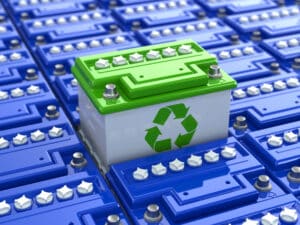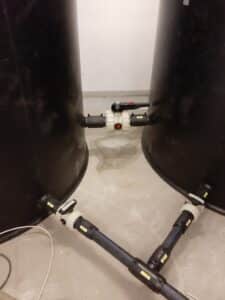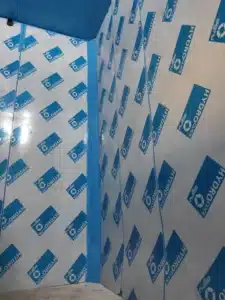For a steam power plant operated by “Porvoon Energia“, a solution had to be found to replace the extremely corroded steel pipes for the transport of cooling water efficiently and quickly. The medium to be transported is sea water. It is known for its high corrosion potential of metals and has impressively demonstrated this with the existing steel pipeline after only 4 years in operation.

The effects and degree of corrosion in a piping system vary according to the application, material quality, and many more factors. In most cases, corroded piping systems are subject to the following problems:
- In some cases the cross-section and thus the flow rate can be reduced by incrustations, in which case more pump capacity is required and operating costs increase.
- Contamination of the liquid to be transported by particles that are detached.
- The pipe walls corrode and become thinner. The pressure resistance decreases as a result.
- Leakages are the further consequence. High costs due to water damage.
MATERIAL SELECTION
A large part of the pipelines currently in operation for seawater or saltwater applications are generally made of high-quality stainless steel, galvanised steel or cast iron. These materials are widely referred to as „saltwater resistant“, but are subject to corrosion over time, which inevitably leads to high maintenance costs and even plant failure/downtime.
For some years now, however, the trend has been towards plastics. Especially under seawater conditions, the service life of thermoplastic materials, which offer excellent corrosion resistance, is many times longer. Due to the very smooth surface of e.g. PE 100-RC pipes, particles find it very difficult to adhere and therefore hardly any deposits are formed.

MATERIAL SUPPLY
All the pipes and fittings used in this project were supplied by AGRU, an international company that manufactures and supplies plastic pipeline components and semi-finished products since 1948. Nowadays the company is one of the world‘s most important single-source suppliers for high-quality piping systems, semi-finished products, concrete protection liners and lining systems made from engineering plastics.
The valves were supplied by Comer S.p.A, an Italian company specialized in the production of U-PVC, ABS, PE and PP-H fittings and valves for use in the hydraulics, waterworks, irrigation, swimming pool, chemical plants, food and navigation industries. Today the company is renowned at an international level for the quality of its products, the result of its experience, know-how and strictly made in Italy working method.

INSTALLATION
The installation was run by one of Atolli’s installation teams. The welding method used in this project was Electrofusion Welding technique, which is the most common method to join PE pipes. In Electrofusion Welding, the joining surfaces (pipe surface and inside of fitting) overlap and are heated to welding temperature, and hence welded, by electrical energy with the aid of resistance wires (hot sleeve) located inside the fitting. The main benefits of Electrofusion Welding are:
– The simplicity of the process while producing consistent joints.
– Automatized parameters to obtain always the same results.
– The welding is produced in a contained area, which means that the risk
of joint contamination is reduced.







